Basal Cell Carcinoma (BCC) is the most common type of skin cancer. It typically develops in areas of the skin exposed to the sun, such as the face, ears, and neck. BCC is highly treatable when detected early, making it crucial for patients to be informed about the different types of BCC and their characteristics.
Basal cellcarcinoma
Types of Basal Cell Carcinoma
Nodular BCC
Description and Appearance: Nodular BCC often appears as a raised, shiny bump that may have visible blood vessels.
Common Locations: Face, neck, and trunk.
Symptoms and Signs: May bleed or ooze, scab over, and then repeat the cycle.
Treatment Options: Serial Curettage and Cautery, Excision, Mohs surgery
Superficial BCC
Description and Appearance: Superficial BCC usually presents as a scaly, reddish patch or a slowly enlarging flat, pink growth.
Common Locations: Chest, back, shoulders, and limbs.
Symptoms and Signs: Often resembles a non-healing patch of dermatitis.
Treatment Options: Serial Curettage and Cautery, Excision, Imiquimod / Aldara cream, photodynamic therapy.
Infiltrating or Morpheaform BCC
Description and Appearance: Infiltrative BCC appears as a firm, scar-like area with indistinct borders.
Common Locations: Face and other sun-exposed areas.
Symptoms and Signs: Can be mistaken for a benign scar or skin condition.
Treatment Options: Excision always necessary
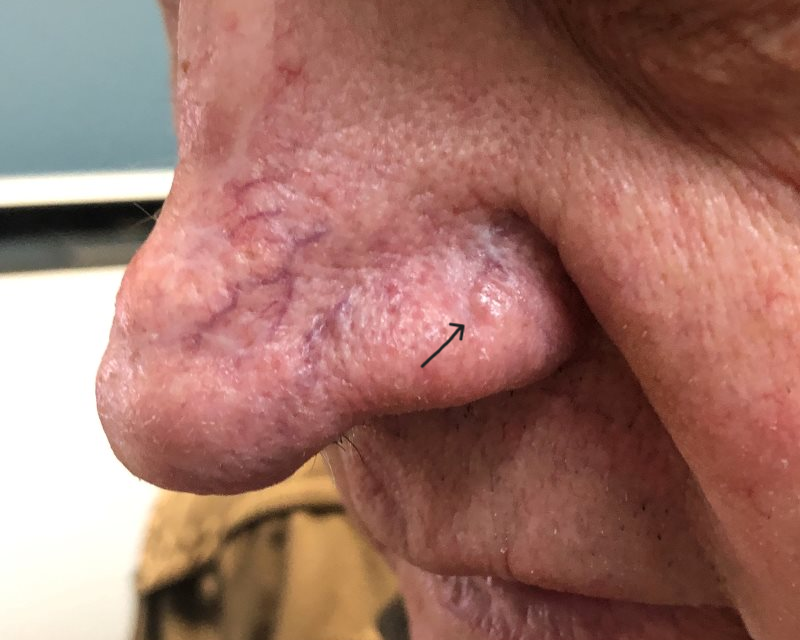
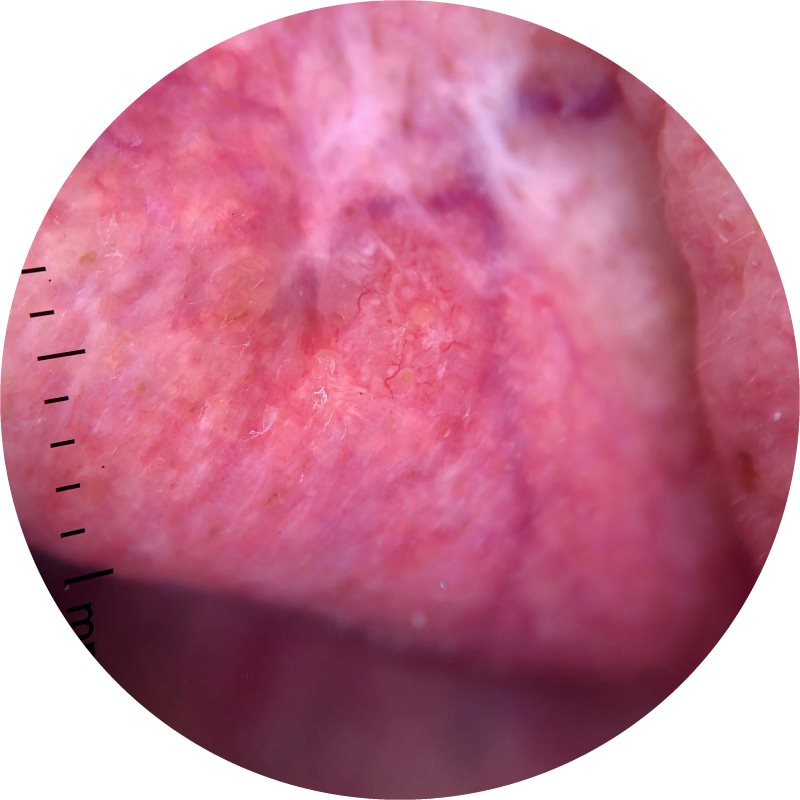
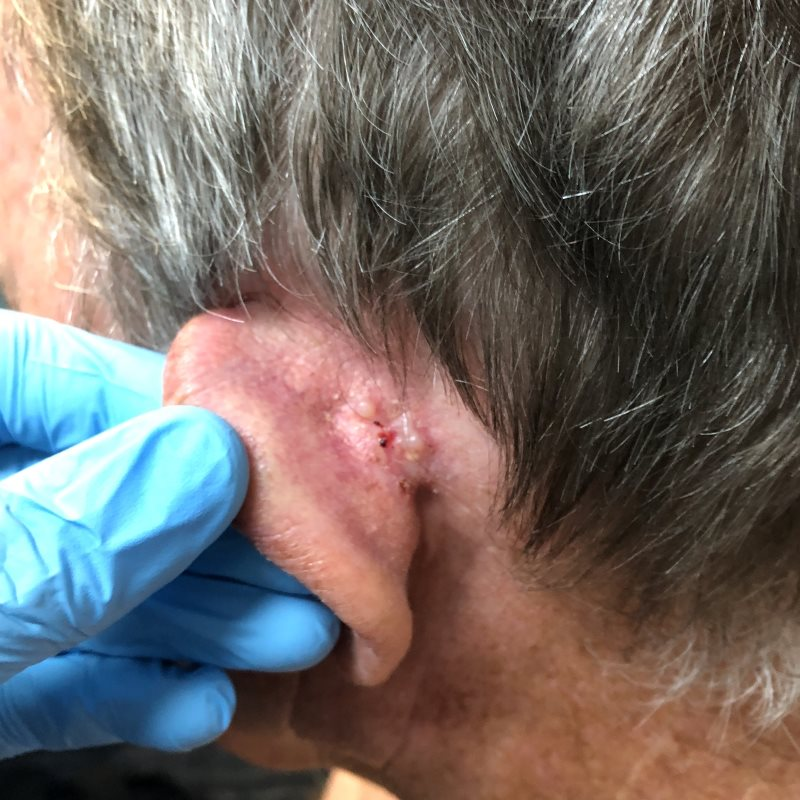
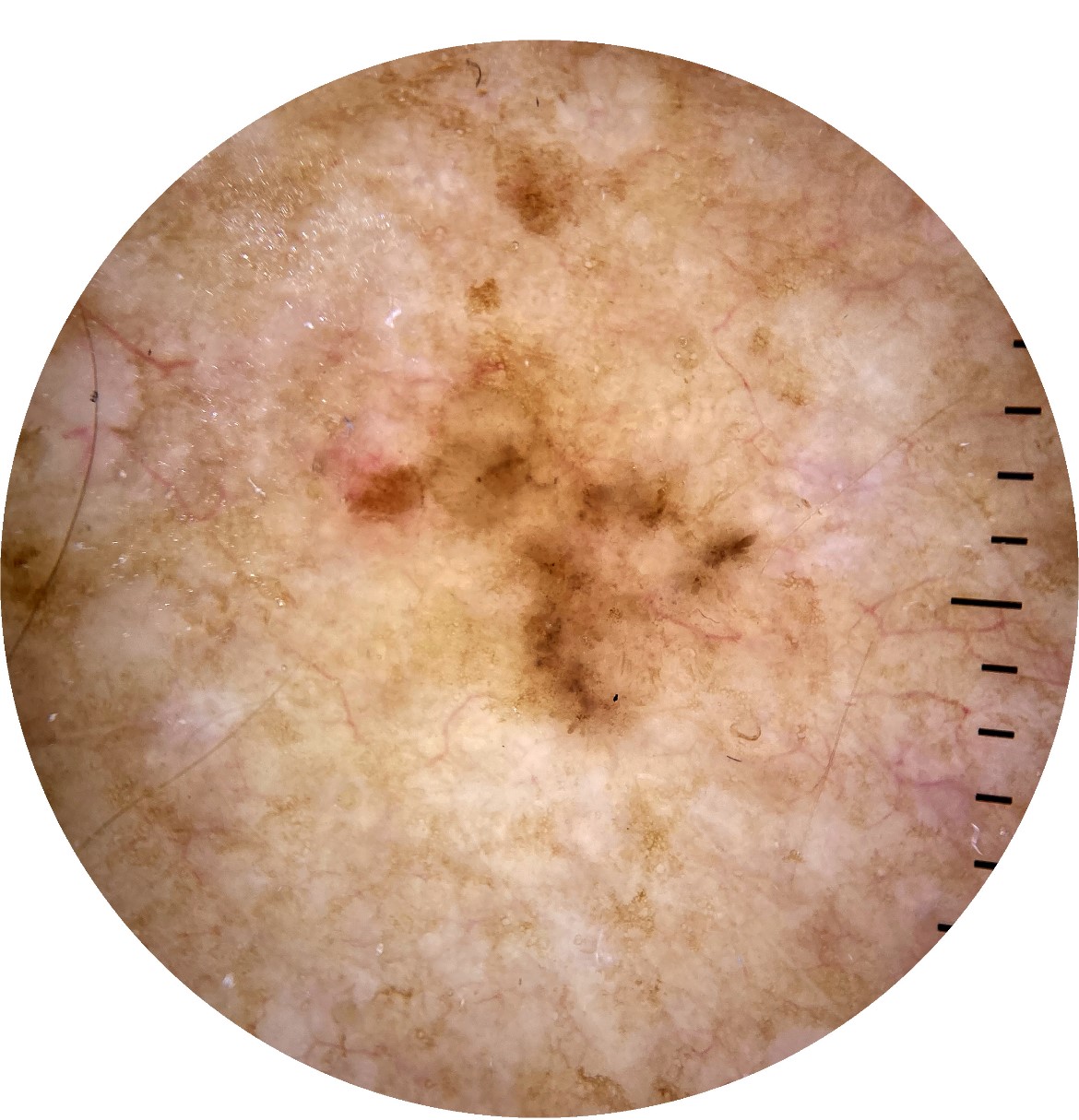
Basosquamous BCC
Description and Appearance: Basosquamous BCC has a mixed appearance, combining features of BCC and squamous cell carcinoma.
Common Locations: Face and neck.
Symptoms and Signs: May resemble a non-healing sore or ulcer.
Treatment Options: Excision or Mohs surgery.
Pigmented BCC
Description and Appearance: Pigmented BCC may have areas of dark brown or black pigment.
Common Locations: Face, back, chest, or limbs.
Symptoms and Signs: Resembles a mole but may exhibit irregular borders.
Treatment Options: Excision or Mohs surgery.
Fibroepithelioma of Pinkus
Description and Appearance: Fibroepithelioma of Pinkus is a rare form of BCC that appears as a small, pinkish growth.
Common Locations: Lower back and genital area.
Symptoms and Signs: Often asymptomatic.
Treatment Options: Excision
RISK FACTORS & PREVENTION
Risk Factors
- Prolonged sun exposure
- History of sunburns
- Fair skin
- Family history of skin cancer
- Weakened immune system
Prevention Strategies
- Use sunscreen with SPF 30 or higher
- Wear protective clothing, including wide-brimmed hats and sunglasses
- Seek shade during peak sun hours
- Avoid tanning beds
- Perform regular self-skin checks
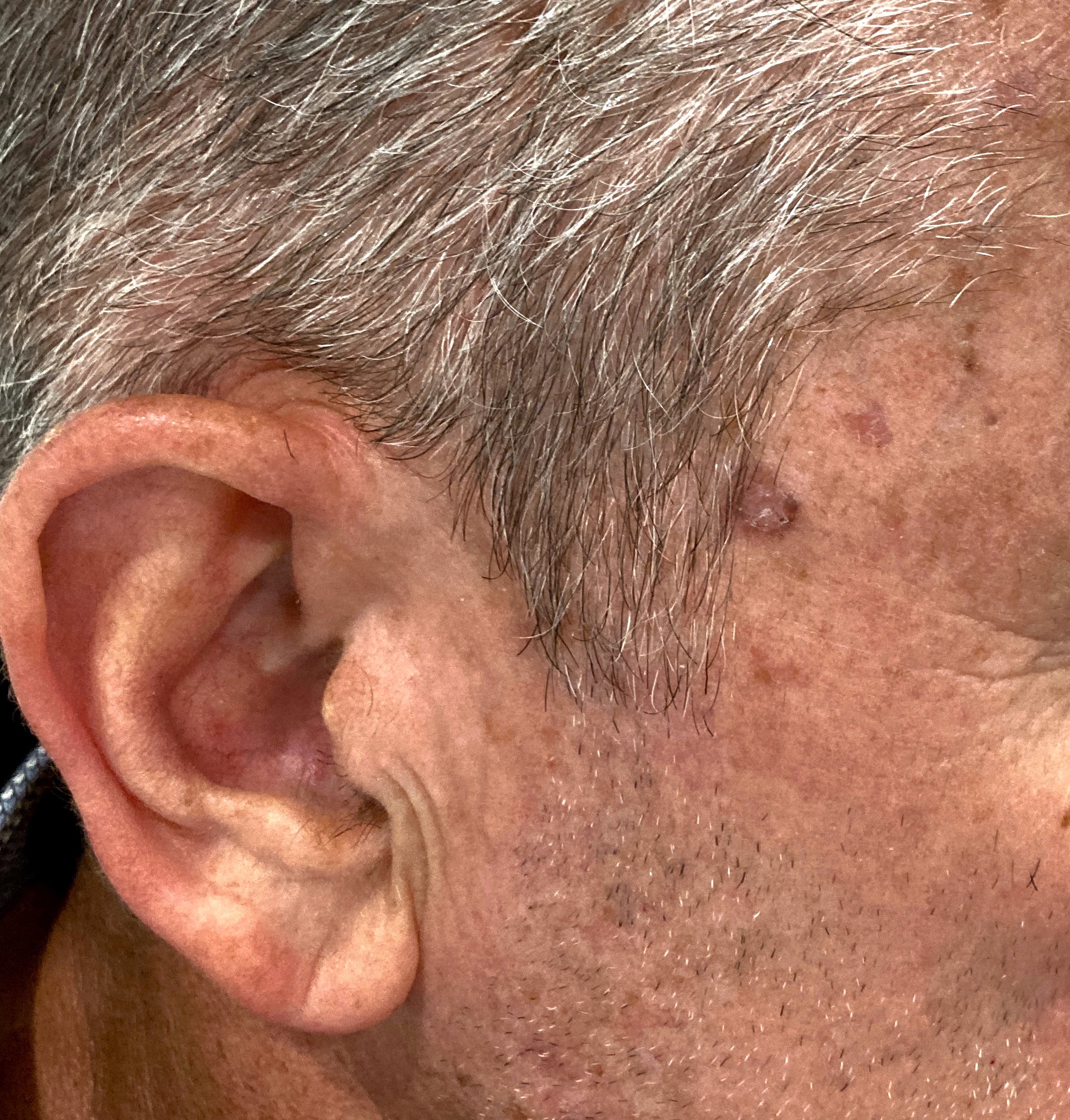
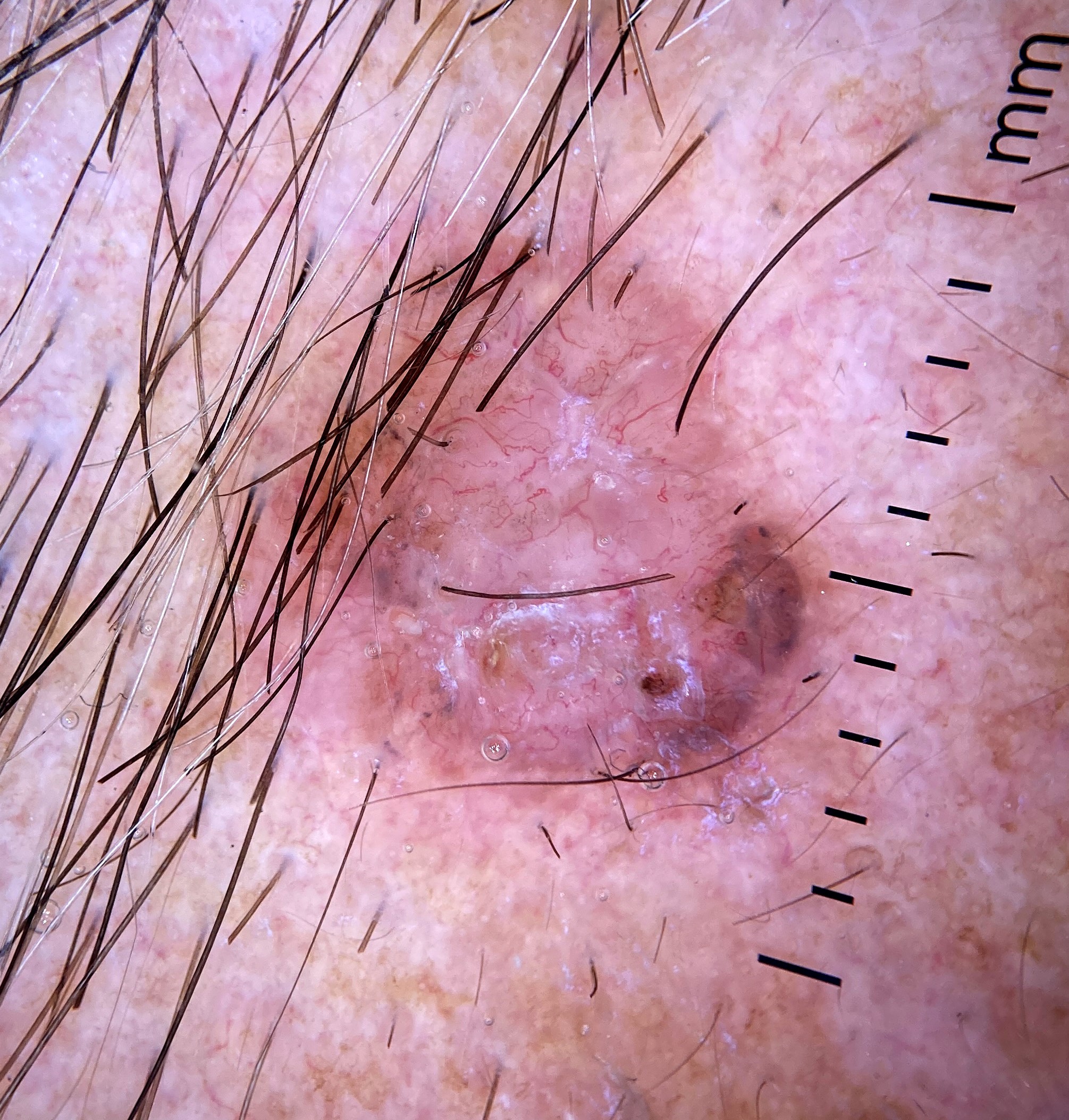
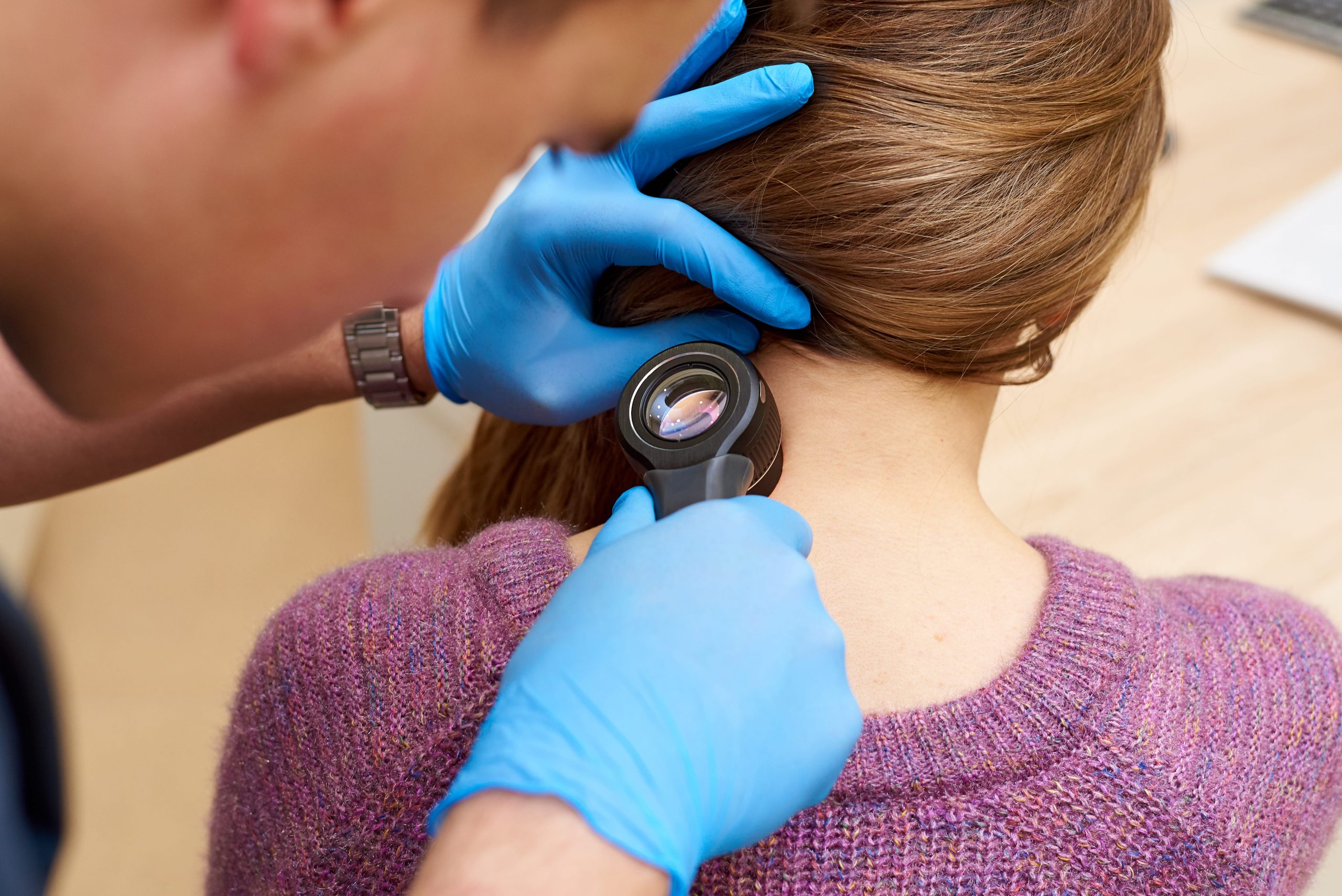
DIAGNOSIS & SCREENING
How BCC is Diagnosed
Clinical examination by a skin doctor. Often a biopsy prior to excision is unnecessary as clinically apparent as a BCC.
Skin biopsy for confirmation if required.
The Role of The Skin Cancer Clinic Claremont in Early Detection
Our doctors are experts in diagnosing and treating skin cancer. Regular skin checks by one of our doctors can lead to the early detection and successful treatment of BCC.
Remember, early detection and treatment are essential for the best outcomes and to avoid surgery. If you notice any unusual skin changes or have concerns about skin cancer, don’t hesitate to consult our team.
BOOK NOW
Our handpicked team of doctors, nurses and health professionals are here to make a meaningful difference to your life, at every stage of your life.

